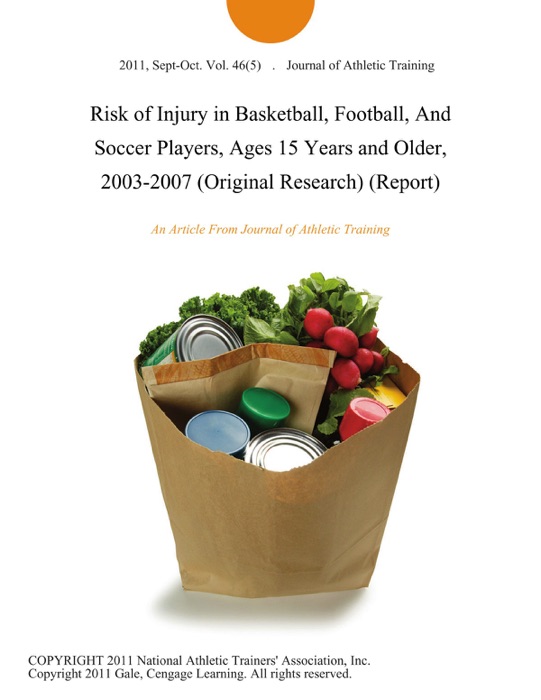[DOWNLOAD] "Risk of Injury in Basketball, Football, And Soccer Players, Ages 15 Years and Older, 2003-2007 (Original Research) (Report)" by Journal of Athletic Training ~ Book PDF Kindle ePub Free

eBook details
- Title: Risk of Injury in Basketball, Football, And Soccer Players, Ages 15 Years and Older, 2003-2007 (Original Research) (Report)
- Author : Journal of Athletic Training
- Release Date : January 01, 2011
- Genre: Sports & Outdoors,Books,
- Pages : * pages
- Size : 262 KB
Description
One of the major challenges in sports injury epidemiology is identifying appropriate denominators for injury rates. Although several sources of publicly available numerator data for sports injuries in the United States are available, often little is known about the extent of exposure or level of participation in these activities. As a result, injury incidence is often calculated based on a defined population that includes nonparticipants in the denominator, such as the U.S. population, which does not accurately convey the risk associated with participation in a specific sport and can lead to false conclusions about the relative safety of various sports. Other analyses may use the number of participants per athletic season or year in the denominator, such as the number of players on a team or participating in a tournament. This approach is an improvement over using a defined population because nonparticipants are excluded. However, these rates can also be problematic because the actual level of participation by each athlete is not taken into account. Another commonly used measure of exposure time is the athlete-exposure (AE), defined as 1 athlete participating in 1 practice or game in which he or she was exposed to the possibility of athletic injury. This measure is often used in studies of high school and collegiate athletes and can be applied to compare risk across several sports. (1-5) Although the AE as a denominator is an improvement over the number of participants, the most desirable level of denominator data, according to de Loes and Goldie, (6) allows the measurement of time at risk. However, such data are not often collected because of the effort and resources needed.